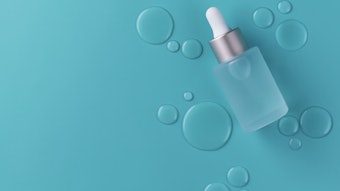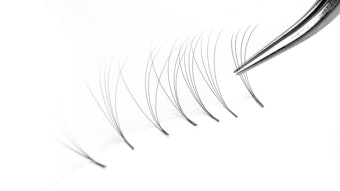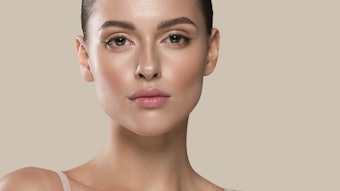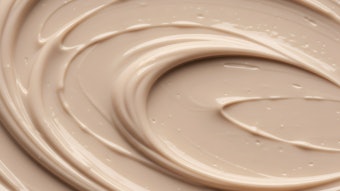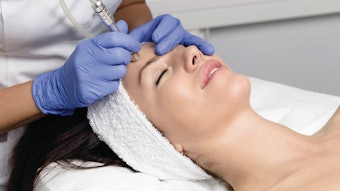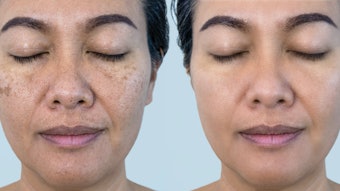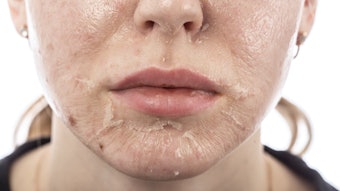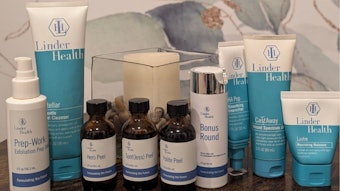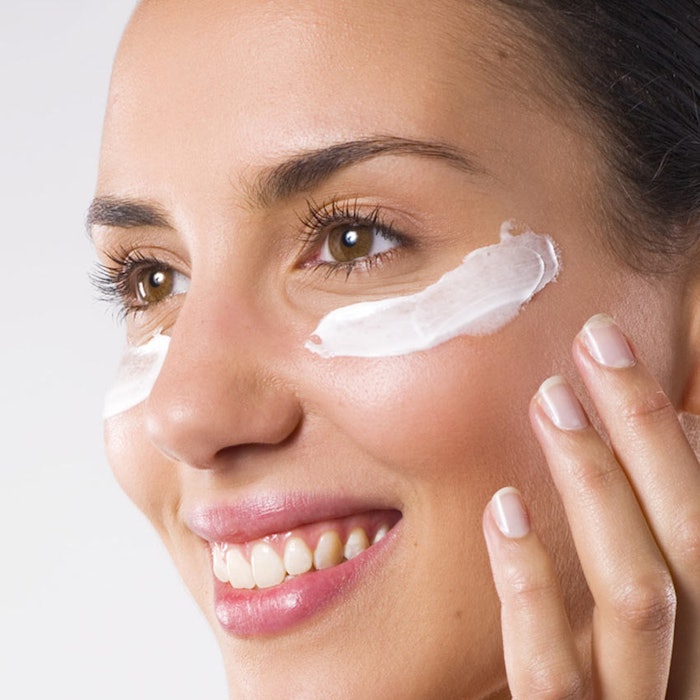
There are many invasive and non-invasive techniques to improve the periorbital and overall eye area. This article will take a look at non-invasive techniques to improve three eye conditions that are of concern to most patients: wrinkles, dark circles and puffiness.
1. Wrinkles
Wrinkles in the eye area can be broadly classified as either wrinkles induced by repetitive muscle contraction or wrinkles induced by age and sun damage combined.
Repetitive muscle wrinkles
Muscle contraction literally leaves deformations in the skin arising from the muscle movement over time. These are difficult to improve dramatically without the use of neuromuscular inhibitors. There have been recent advances in products that “soften” these types of lines topically without the use of these inhibitors.
Tip #1. Wash and exfoliate skin well before applying these topical softeners and apply the product before the application of any other products. The topicals that soften these lines must be bioavailable to the muscle, so the product must deliver these topicals deeply into the skin without any occlusive products blocking them.
Sun and age wrinkles
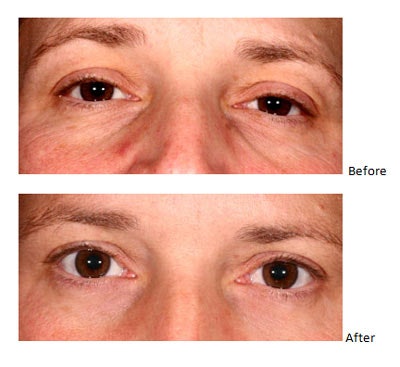 Wrinkles caused be age and sun damage are primarily due to collagen and elastin loss over time. You will notice in the images to the left that the proper collagen/elastin initiators can result in a remarkable improvement.
Wrinkles caused be age and sun damage are primarily due to collagen and elastin loss over time. You will notice in the images to the left that the proper collagen/elastin initiators can result in a remarkable improvement.Tip #2. Apply Tip #1. It is important to allow the product that you are applying to get to the dermal layer so that it can induce collagen and elastin production in the dermal tissue at the fibroblast. If the skin is occluded by makeup, sunscreen or soaps with fatty acids, they will be much less effective.
2. Dark Circles
Eye area darkness may be caused by multiple factors. These include melanin banding patterns (naturally occurring genetic hyperpigmentation), hemoglobin deposition in the under eye and sun damage. Melanin banding patterns can be seen as smooth darker areas above and below the eye area. These arise naturally as genes are passed on in family groups.
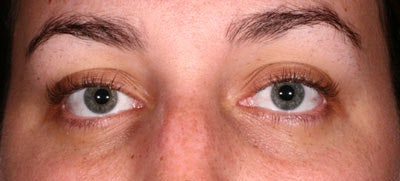 In general, the use of topicals will be sufficient in managing the
In general, the use of topicals will be sufficient in managing the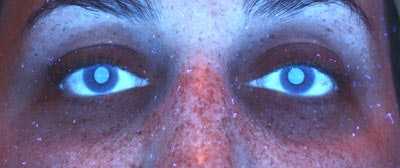 tonal change that is seen. The use of hydroquinone is generally avoided due to the irritation potential involved.There are products available that contain a variety of gentle lighters such as undecylenoyl pheylalanine, botanical lighteners, kojic acid, etc. You can see the “shadow” produced by the banding pattern in the images to the left, with the right image under color UV clinical photography.
tonal change that is seen. The use of hydroquinone is generally avoided due to the irritation potential involved.There are products available that contain a variety of gentle lighters such as undecylenoyl pheylalanine, botanical lighteners, kojic acid, etc. You can see the “shadow” produced by the banding pattern in the images to the left, with the right image under color UV clinical photography.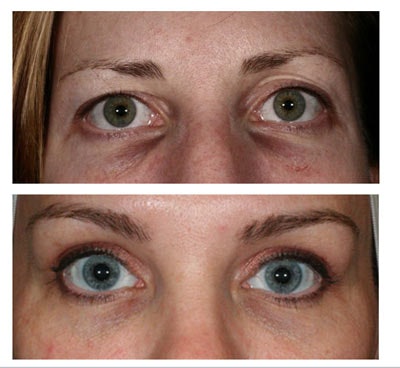 Tip #3. Melanin banding patterns tend to darken with age, so the earlier they can be identified the better the lightening result will be. Hemoglobin deposition (under eye darkness) occurs when blood passes through the fine capillaries in the under eye area and tends to accumulate in that area. The coloration in the under eye area can range from a dark rust color to a lighter pink color depending on the severity and age of the condition. The application of a topical can usually manage this condition, but it must contain an ingredient that can “chelate” and therefore remove the hemoglobin. See the pictures on the left for the types of hemoglobin.
Tip #3. Melanin banding patterns tend to darken with age, so the earlier they can be identified the better the lightening result will be. Hemoglobin deposition (under eye darkness) occurs when blood passes through the fine capillaries in the under eye area and tends to accumulate in that area. The coloration in the under eye area can range from a dark rust color to a lighter pink color depending on the severity and age of the condition. The application of a topical can usually manage this condition, but it must contain an ingredient that can “chelate” and therefore remove the hemoglobin. See the pictures on the left for the types of hemoglobin.Tip #4. To achieve the removal of this type of under eye darkness, it is important to use an “effleurage” technique whereby circular motions are applied from the inside of the eye are to theoutside. There also must be the recognition of a warming sensation on the fingertip signaling that blood flow has started in the area. This usually takes about 15 seconds to start to feel.
Sun damage in the eye area is prominent these days. It is always important to apply a broad spectrum SPF 30 or higher sunscreen to keep this delicate area protected. When sun damage does occur the use of non-hydroquinone skin lighteners is important.
Tip #5. Use an antioxidant in conjunction with the skin lighteners to help with collagen and elastin damage over time. Many topicals contain antioxidants in combination with collagen and elastin initiators.
3. Puffiness
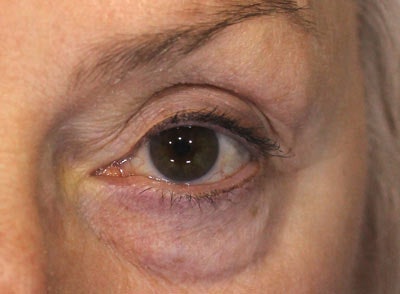 Under eye puffiness is usually caused by one of two issues. Either the under eye area accumulates water in the tissue or fat pads in the face tend to atrophy over time and change in size and location in the face. If the fat pads in the face are the root cause as shown in the image to the left, there is little that can be done other than surgery. If the challenge is water
Under eye puffiness is usually caused by one of two issues. Either the under eye area accumulates water in the tissue or fat pads in the face tend to atrophy over time and change in size and location in the face. If the fat pads in the face are the root cause as shown in the image to the left, there is little that can be done other than surgery. If the challenge is water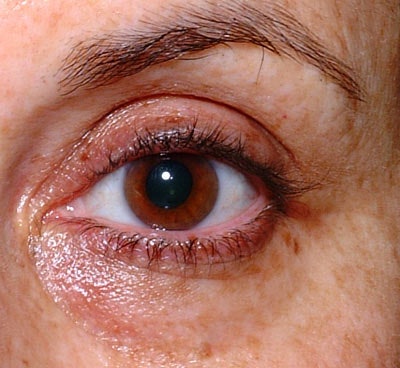 accumulation (as shown in the image to the left), using the effleurage technique as described above is effective. The image to the right is an example of under eye puffiness from fat atrophy.
accumulation (as shown in the image to the left), using the effleurage technique as described above is effective. The image to the right is an example of under eye puffiness from fat atrophy.
